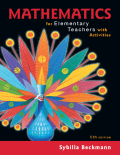
Concept explainers
Suppose that 1% of the population has a certain disease. Also suppose that there is a test for the disease, but it is not completely accurate: It has a 2% rate of false positives and a 1 % rate of false negatives. This means that the test reports that 2% of the people who don’t have the disease do have it, and the test reports that 1% of the people who do have the disease don’t have it. This problem is about the following question:
If a person tests positive for the disease, what is the probability that he or she actually has the disease?
Before you start answering the next set of questions, go back and read the beginning of the problem again. Notice that there is a difference between actually having the disease and testing positive for the disease, and there is a difference between not having the disease and testing negative for it.
a. What do you think the answer to the previous question is? (Answer without performing any calculations—just make a guess.)
b. For parts (b) through (f), suppose there is a random group of 10,000 people and all of them are tested for the disease.
Of the 10,000 people, ¡n the ideal, how many would you expect to actually have the disease and how many would you expect not to have the disease?
c. Continuing part (b), of the people from the group of 10,000 who do not have the disease, how many would you expect to test positive, in the ideal? (Give a number, not a percentage.)
d. Continuing part (b), of the people from the group of 10,000 who have the disease, how many would you expect to test positive? (Give a number, not a percentage.)
e. Using your work in parts (c) and (d), of the people from the group of 10,000, how many in total would you expect to test positive, in the ideal?
f. Using your previous work, what percent of the people who test positive for the disease should actually have the disease, in the ideal? How does this compare to your guess in part (a)? Are you surprised at the actual answer?
Want to see the full answer?
Check out a sample textbook solution
Chapter 16 Solutions
EBK MATHEMATICS FOR ELEMENTARY TEACHERS
- = Q6 What will be the allowable bearing capacity of sand having p = 37° and ydry 19 kN/m³ for (i) 1.5 m strip foundation (ii) 1.5 m x 1.5 m square footing and (iii)1.5m x 2m rectangular footing. The footings are placed at a depth of 1.5 m below ground level. Assume F, = 2.5. Use Terzaghi's equations. 0 Ne Na Ny 35 57.8 41.4 42.4 40 95.7 81.3 100.4arrow_forwardQ1 The SPT records versus depth are given in table below. Find qan for the raft 12% foundation with BxB-10x10m and depth of raft D-2m, the allowable settlement is 50mm. Elevation, m 0.5 2 2 6.5 9.5 13 18 25 No.of blows, N 11 15 29 32 30 44 0 estigate shear 12%arrow_forward2arrow_forward
 Holt Mcdougal Larson Pre-algebra: Student Edition...AlgebraISBN:9780547587776Author:HOLT MCDOUGALPublisher:HOLT MCDOUGAL
Holt Mcdougal Larson Pre-algebra: Student Edition...AlgebraISBN:9780547587776Author:HOLT MCDOUGALPublisher:HOLT MCDOUGAL Big Ideas Math A Bridge To Success Algebra 1: Stu...AlgebraISBN:9781680331141Author:HOUGHTON MIFFLIN HARCOURTPublisher:Houghton Mifflin Harcourt
Big Ideas Math A Bridge To Success Algebra 1: Stu...AlgebraISBN:9781680331141Author:HOUGHTON MIFFLIN HARCOURTPublisher:Houghton Mifflin Harcourt Glencoe Algebra 1, Student Edition, 9780079039897...AlgebraISBN:9780079039897Author:CarterPublisher:McGraw Hill
Glencoe Algebra 1, Student Edition, 9780079039897...AlgebraISBN:9780079039897Author:CarterPublisher:McGraw Hill- Algebra & Trigonometry with Analytic GeometryAlgebraISBN:9781133382119Author:SwokowskiPublisher:Cengage



